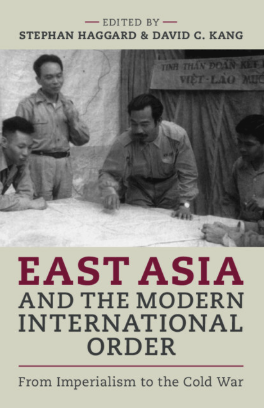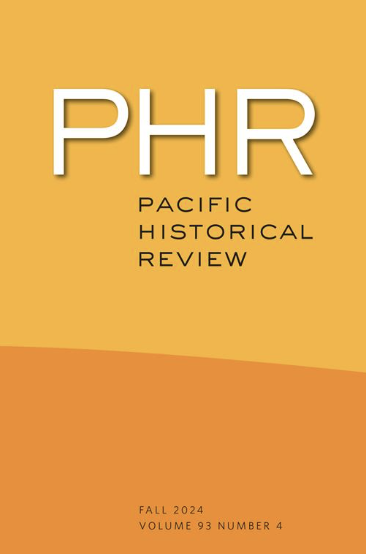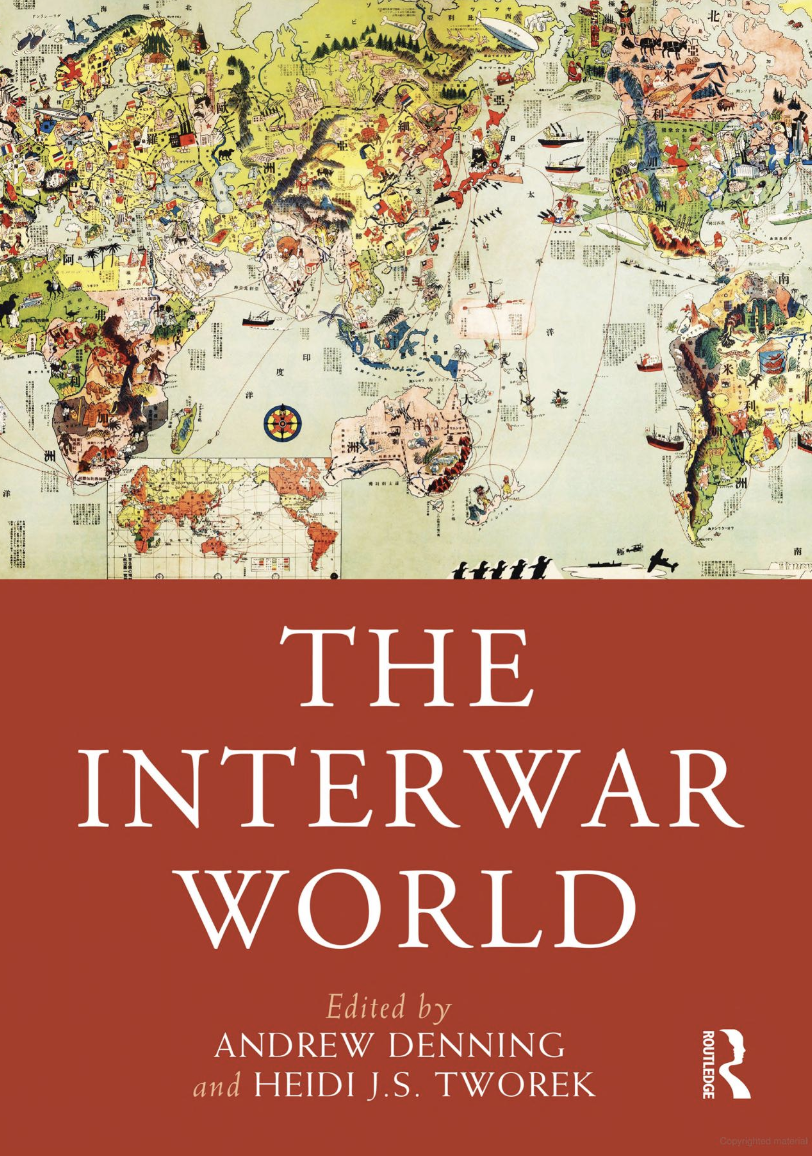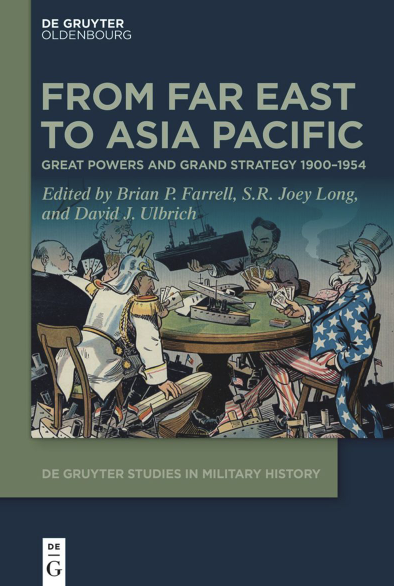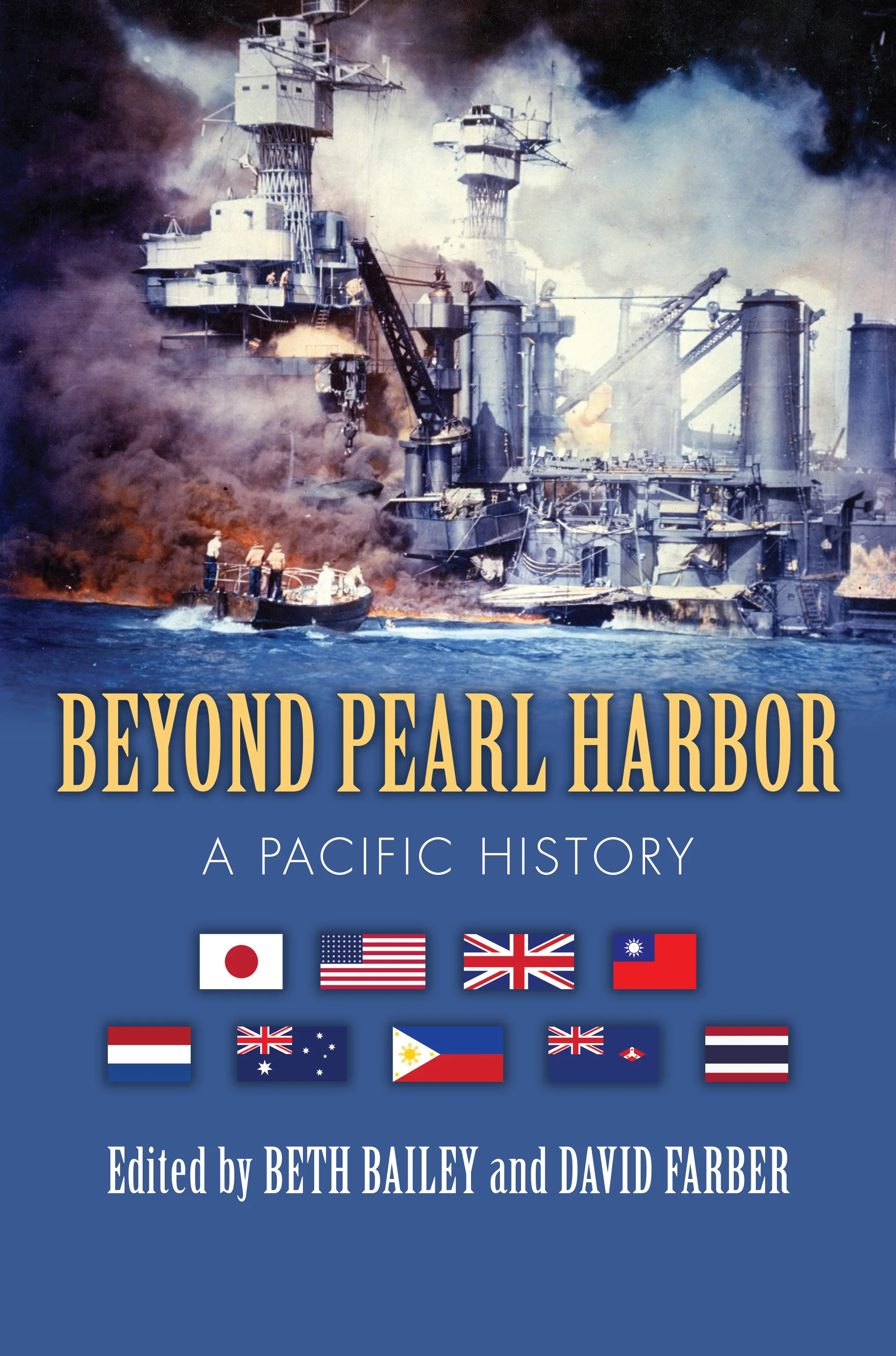Featured Publications
Book Chapter: “Japan and New Orders in East Asia, 1914-1945,” Stephan Haggard and David C. Kang, eds., East Asia and the Modern International Order: From Imperialism to the Cold War (Cambridge: Cambridge University Press, 2025), 166-183.
Why did Japan shift from being a status quo power in the 1920s to a revisionist power in the 1930s? This chapter focuses on the the rise of total war thought during World War I, which led military strategists to view self-sufficiency in resources and production as the prerequisite to success in modern warfare. This understanding of the importance of self-sufficiency began to influence national policy once the liberal order of the 1920s began to break down, and served as the backdrop behind a series of natural security solutions that gravitated toward war and establishing a new order in the region. The total war of World War II, in turn, shaped the entirety of Japan’s new order, the Greater East Asia Co-Prosperity Sphere.
Monograph: Japan at War, 1914-1952 (Routledge, 2025).
This book highlights the centrality of war to the modern Japanese experience. It examines how how World War I set off profound changes that led to the rise of a politicized military, aggressive imperial expansion, the militarization of Japanese social, political, and economic life, and decisions to wage war in China and across the Asia-Pacific. In telling this story of Japan in war and peace, this book highlights the importance of Japan in the creation of the modern world.
Monograph: The Greater East Asia Co-Prosperity Sphere: When Total Empire Met Total War. Ithaca, NY: Cornell University Press, 2019.
This book explores the Greater East Asia Co-Prosperity Sphere, Japan’s ambitious attempt to create a New Order in East Asia during World War II. It combines an analysis of Japanese high policy with a story of how Japan’s newfound empire was received on the ground in the Philippines and Burma. In doing so, this monograph tells the stories of both the height of Japanese imperialism and the beginnings of empire’s end in Asia.
“Lost in Translation? PT-109 and Storytelling in US-Japan Relations.” Pacific Historical Review 93:4 (Oct. 2024), 626-657. (Co-authored with Phil Tomsovic)
The PT-109 story is the stuff of legend. Scholars tell the sinking of John F. Kennedy’s patrol torpedo (PT) boat as a U.S. story, focusing on Kennedy’s heroism, his incompetence, and how it launched his public career. This article reveals the PT-109 story as co-constructed in Japan and the United States. Kennedy went to Japan in 1951 to craft a narrative of forgiveness and friendship that would help his political career. His visit led to a remarkable letter exchange with the captain of the destroyer that sunk his boat, Hanami Kohei. These letters, and Hanami’s exaggerations to his story in the following decade, courted a controversy about the remembrance of the past that influences how the incident is viewed today. The war story affirmed and strengthened the narratives of “forgiveness” and “friendship” that defined the postwar U.S.-Japan partnership.
Other Peer-Reviewed Publications
“International Relations and Diplomacy.” In Andrew Denning and Heidi J.S. Tworek, eds., The Interwar World (Routledge, 2023)
This book chapter tells the history of the international relations of the “interwar” era through the prism of efforts to build a new global order—the Washington System. In doing so, this chapter seeks decenter global history away from the European or the Atlantic, and instead to narrate the international relations and diplomacy of “interwar” era from the vantage point of Asia. By focusing on the rise and fall of the Washington System in Asia, this chapter reveals the1920s as an era of global order creation, and the 1930s as an era of regional order creation that continued until the end of World War II.
“Playboy, Shueisha, and the Birth of Men’s Magazines in 1960s Japan.” Journal of Japanese Studies, Vol 48, No. 2 (Summer 2022), 383-409. (Co-authored with Phil Tomsovic).
This article explores the transnational emergence of popular men’s magazines in 1960s Japan. It highlights how Hugh M. Hefner’s Playboy inspired Japanese publishers to create new men’s magazines that incorporated elements of its style. Shueisha’s release of Shukan Pureiboi (Weekly Playboy) in 1966, in turn, triggered a legal conflict over intellectual property infringement that convinced Hefner to partner with Shueisha to produce Playboy Nihonban (Playboy Japan). This partnership in 1975 signified the rise of Shueisha as a general publisher and bookended the first era of popular men’s magazines in Japan.
“What Grand Strategy? Japan, 1931-1945.” In Brian P. Farrell, S.R. Joey Long, David J. Ulbrich, eds., From Far East to Asia Pacific: Great Powers and Grand Strategy 1900–1954. De Gruyter, 2022.
This chapter argues that the system of policymaking in the 1930s and the independence of the military from cabinet control initially constrained the government’s ability to enact a grand strategy. Total war in China from July 1937, however, made grand strategy possible in a way it had not been since the Manchurian Incident. This culminated in two moments of “inchoate grand strategy” during World War II.
“Wartime Wilsonianism and the Crisis of Empire, 1941-1943.” Modern Asian Studies, Vol. 53, Iss. 4 (July 2019), 1278-1311. (OPEN ACCESS)
This article reveals striking parallels between how the British Empire and Imperial Japan employed Wilsonian ideology during World War II. Both empires enshrined Wilsonian (liberal internationalist) values into their war aims to survive a gruelling war with empire intact. But the endorsement of national self-determination gave dependent states a means to protest the realities of both British and Japanese rule. This article sheds light on the part Wilsonian ideology played in the global crisis of empire during World War II.
“Japan and the Spirit of December 8.” In Beth Bailey and David Farber, eds., Beyond Pearl Harbor: A Pacific History. The University Press of Kansas, 2019.
This chapter highlights the jingoism and euphoria that emerged in Japan in the wake of Pearl Harbor and the attacks of December 8, 1941. It shows how the attacks of December 8th generated a festive atmosphere and a sense of popular excitement for Japan’s expanded war. The outbreak of ensured popular commitment to Japan’s effort to build a new empire that reached from the cold woods of Sakhalin to the jungles of Indonesia, and from the Philippine tropics to the jungles and deltas of Burma.
“Japan, Pearl Harbor, and the Poetry of December 8th.” The Asia-Pacific Journal: Japan Focus, Vol. 14, Issue 24, No. 3 (Dec. 2016). (Co-authored with Andrew Campana).
This article explores tanka poetry published after the Pearl Harbor attack as a window into the public reaction in Japan to the outbreak of the Pacific War. Tanka became a powerful tool of propaganda in the hands of professional poets, but it also allowed amateur poets and political figures to express their private, diary-bound dissent.
“Into the Tiger’s Den: Japan and the Tripartite Pact, 1940.” Journal of Contemporary History, Vol. 51, No. 3 (Jul. 2016), 555–576.
This is a diplomatic history of Japan’s decision to join Nazi Germany and sign the Tripartite Pact in September 1940. I show how fears of phantom German desires to exercise political control over Southeast Asia ironically convinced Tokyo to declare Japanese interests in leading “Greater East Asia” and to bind its fate with Berlin.
“The Specter of Revolution: Reconsidering Japan’s Decision to Surrender,” The International History Review, Vol. 35, No. 1 (Mar. 2013), 205-226.
This paper seeks to broaden the scope of the debate on the end of World War II in Asia by focusing on Japan’s domestic situation as a major factor behind the decision to surrender. It argues that a near-obsessive fear of social revolution among Japan’s conservative ruling elite played an important role in prompting Japanese elites to make the decision to end the war.
Popular Journals, Interviews
“El imperialismo japonés y la esfera de coprosperidad de Asia oriental.” Desperta Ferro: Contemporánea, ISSN 2340-8820, Nº. 58, 2023 (Ejemplar dedicado a: Sol naciente: la expansión japonesa en el sudeste asiático 1941), págs. 6-11
This is a short primer on the Greater East Asia Co-Prosperity Sphere, written for a military history journal, Desperta Ferro, and part of a collection on the Japanese expansion in Southeast Asia in 1941.
Interview: “Historian Jeremy Yellen on the Greater East Asia Co-Prosperity Sphere” at #AsiaNow, the blog of the Association for Asian Studies.
This is an interview about my recent book, The Greater East Asia Co-Prosperity Sphere: When Total Empire Met Total War (Cornell University Press, 2019), conducted at the online blog of the Association for Asian Studies.
“Shinzo Abe’s Constitutional Ambitions.” The Diplomat, June 12, 2014.”
This article highlights Prime Minister Shinzo Abe’s ambitions in 2014 to revise Japan’s pacifist constitution to allow Japan to participate in collective self-defense, despite widespread opposition to such moves.
“Japan and the Lessons of World War II,” published as 二戰真正教訓 安倍原來不懂的, Hong Kong Economic Journal 信報財經新聞, August 15, 2015. (Paywall – Subscribers only)
A page-long editorial in the Hong Kong Economic Journal to commemorate the 70th anniversary of the end of World War II by discussing the lessons Japan has taken from the global conflict.
For the English language version of this paper, click here.
Japan’s Security Policy Shift: “A Blow to Ties with East Asia.” Deutsche Welle, July 1, 2014. (Interview)
Interview with Deutsche Welle about the implications of Japan’s changing security policy.
Book Reviews
Review of Yoshikuni Igarashi, Japan, 1972: Visions of Masculinity in an Age of Mass Consumerism (Columbia University Press, 2021). Journal of Japanese Studies (2024) 50 (2): 531–535.
Review of John Gripentrog, Prelude to Pearl Harbor: Ideology and Culture in US-Japan Relations, 1919-1941 (Rowman & Littlefield, 2021). Pacific Historical Review 92:4 (2023), 659-661.
Review of John Person, Arbiters of Patriotism: Right-Wing Scholars in Imperial Japan (Honolulu: University of Hawaii Press, 2020). Global Intellectual History 8:3 (2023), 374-376.
Review of Sarah Kovner, Prisoners of the Empire: Inside Japanese POW Camps (Cambridge: Harvard University Press, 2020). Social Science Japan Journal 26:1 (Winter 2023), 125-128.
Review of Marc Gallicchio, Unconditional: The Japanese Surrender in World War II. Oxford University Press, 2020). H-Diplo Roundtable XXIII-18, pp. 34-37.
Review of W. Puck Brecher and Michael W. Myers, eds., Defamiliarizing Japan’s Asia-Pacific War. University of Hawaii Press, 2019. Social Science Japan Journal 25:1 (Mar. 2023), 57-60.
“The Best Books on the Japanese Empire.” Shepherd (Nov. 2021).
Review of Kitaoka Shinichi, The Political History of Modern Japan, trans. Robert D. Eldridge with Graham Leonard. New York: Routledge, 2018. Contemporary Japan 34:1 (2022), 106-108.
Review of Max Ward, Thought Crime: Ideology & State Power in Interwar Japan. Durham: Duke University Press, 2019. 312 pp. Reviewed in Journal of Japanese Studies 46:2 (2020), 492-496.
In the News
“Voices in Japan: Quote of the Day” Japan Today-2 May 2019
“Emperor Akihito becomes first Japanese monarch to abdicate in 200 years” CNN-30 Apr 2019
“Emperor Naruhito is ready to ascend the Chrysanthemum Throne. What can Japan expect from its new ruler?” CNN-30 Apr 2019
“US media extensively cover Japanese emperor's abdication” Kyodo News Plus-30 Apr 2019
“Japan Is Getting a New Emperor. Here's What to Know About Him” TIME-29 Apr 2019
Forced labour a sore topic between South Korea and Japan as court verdict looms” South China Morning Post-21 Nov 2018
Japan’s Security Policy Shift: “A Blow to Ties with East Asia.” Deutsche Welle, July 1, 2014.
